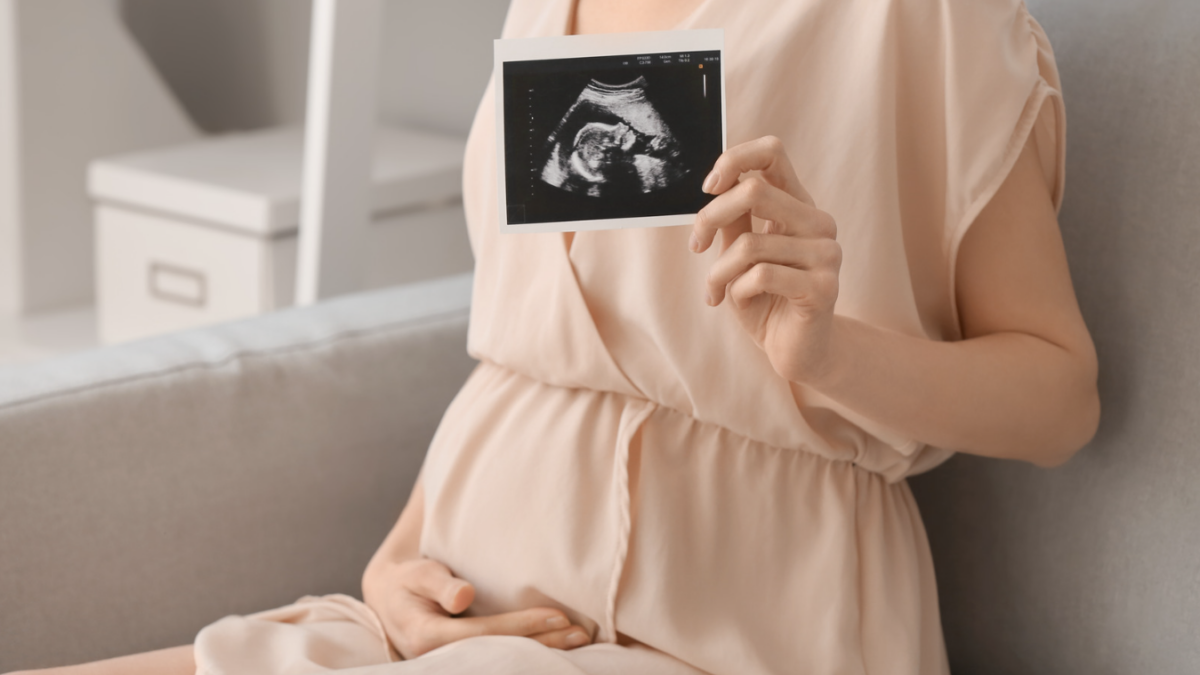
Western civilization is at a tipping point over the value of human life. Protesters in Ireland are screaming “Hoes need abortions” as citizens debate whether to repeal their Eighth Amendment that secures a right to life.
Meanwhile, Mississippi passed the United States’ toughest restriction on abortion, a ban of abortion past 15 weeks with minimal exceptions. A judge temporarily blocked it, since it violates court precedent protecting abortion before a baby’s viability outside the womb.
At the same time, a Republican Congress keeps failing to defund abortion providers like Planned Parenthood, possibly prompting President Trump’s reinstatement of a Reagan rule prohibiting federal funds for women’s centers located with abortion facilities.
The final end to abortion in America probably won’t come all at once. When Roe v. Wade is finally overturned, the matter will be left to the states. Some states will ban the practice, and more will follow suit. But many pro-lifers believe we will end state sponsorship of the death culture.
Regardless of how many states ban abortion or how long it takes, it’s important to address concerns about how women, especially women in desperate circumstances, can be supported when abortion is no longer a legal option.
1. Improve Reproductive Education
There’s no getting around it. Where legal abortion access is restricted, demand for illegal abortions increases. According to research by the Guttmacher Institute, the state with the highest number of searches related to DIY abortions was Mississippi, where only one legal abortion facility exists.
This is not a reason to keep abortion clinics open, however. It’s a pressing reason to educate women on the dangers of trying to kill their preborn babies themselves, or by the hands of unlicensed and unaccountable abortionists.
Reproductive education should include a thorough examination of the consequences of abortions, both DIY and “back-alley.” DIY abortions are extremely dangerous. They can kill you, put you in the hospital, or leave you infertile.
The World Health Organization estimates 22 million “unsafe” abortions happen annually across the world, leading 47,000 women to death and 5 million to disabilities over the past two decades. An “unsafe” abortion is “carried out either by persons lacking the necessary skills or in an environment that does not conform to minimal medical standards, or both.” WHO estimates that 20-30 percent of unsafe abortions cause infection of the reproductive tract, and one in four women who’ve undergone an unsafe abortion will develop temporary or lifelong disabilities.
Since back-alley abortionists operate outside the law, they don’t adhere to health codes. There are no consequences if the mother dies on the table, as long as practitioners aren’t caught by law enforcement.
Reading descriptions of the horrid conditions of abortionist Kermit Gosnell’s facility should give you an idea of the danger a woman would put herself in by entering a black market abortion mill. According to a grand jury report, “The medical practice by which he [Gosnell] carried out this business was a filthy fraud in which he overdosed his patients with dangerous drugs, spread venereal disease among them with infected instruments, perforated their wombs and bowels – and, on at least two occasions, caused their deaths.”
Gosnell’s clinic was licensed, and many reports were made to the Department of Health about his facility. Complaints about unsanitary, unsafe practices have been made against many other legal abortion facilities, and they often skirt consequences for years at the expense of their clients. If this is the status quo for legal clinics, imagine what black market operations will look like.
Again, because illegal abortions will be the only kind (save in cases where the mother’s safety is threatened), demand for illegal abortions will increase, and therefore the number of women back alley practitioners could prey upon. Gosnell was at a deeper level, but plenty of people are willing to exploit and kill for profit, both legally and illegally.
Women must be equipped with the truth if they and their babies are to stay safe: about what unsafe abortions can do to them, and to the lives within them. Both young women and men should be educated on babies’ development in the womb. When can heartbeats be detected? Do middle schoolers and high schoolers know it’s as early as six weeks? Do they know that tiny babies at this age already have eyelids? Do they know they’ve developed arms and legs in week 9, and teeth and nails at week 12?
Children deserve the truth. Early fetuses aren’t globs of undifferentiated cells or tumor-like masses. They’re unique human beings, with their own unique DNA. Abortion ends a human life. We don’t lie to our young people about the evils of slavery, and we shouldn’t lie to them about this.
It’s also important that young women hear from women who regret their abortions, and to hear how many women regret or felt they had negative outcomes from abortions. Fully half of women who volunteered survey data at a pregnancy resource clinic (out of 987 respondents) said they took prescription medications for mental health issues after their abortion. Nearly a third (32 percent) said there were absolutely no positive outcomes.
In The Federalist, A.D.P. Efferson highlighted one woman’s response: “None, there are no positives. My life is no better, it is much worse. I carry the pain of a child lost forever… I would rather have been a single mother of two and have my baby here.” Respondents also registered rates between 9-14 percent for depression, guilt, self-hatred, shame, addiction, and regret.
2. Encourage Adoption, Especially Cross-Racial
Adoption is the most widely used talking point on abortion, and for good reason. If a mother truly is not in a position to care for her child, and neither is her family, then adoption is her only answer.
While plenty of agencies connect prospective parents with mothers, we must prepare to address the race disparity in adoption. Black babies are “harder to place” than white babies. They make up 21 percent of all adoptions, 62 percent higher than the percentage of blacks in America (13.1 percent). The latest data reveals black women have 391 abortions per 1,000 live births and black abortions make up 36 percent of all U.S. abortions.
When abortion is finally outlawed on the state level, adoption agencies will see an increase in black babies up for adoption, since not all women will be able to afford to travel out of state for an abortion (and many more will be waitlisted due to restricted abortion supply, which will probably mean some women can’t get the procedure before the gestational cutoff age).
In Ohio, probably the most likely state to ban abortion outside states with “trigger laws,” which already outlaw abortion in the event Roe is overturned, black abortions make up 40 percent of total abortions, although black Americans are only 14.2 percent of the population. In Louisiana, which has a trigger law, they make up 60 percent of the state’s abortions, though blacks account for 32 percent of the population.
Many women who abort do so under the pretense that, for whatever reason, their babies wouldn’t be loved and deserve better than their mothers can offer. Those women need to trust that their babies will find good homes. Are enough prospective parents willing to adopt children of a different race?
The disparity in adoption fees between black babies and white babies indicate that’s not the case. If every baby is to be placed in a loving home, we need to encourage biracial families. Pop culture can have a strong influence in how people perceive biracial families (think “This is Us”), but if racially divisive politics and far-left ideas of segregation gain traction, we won’t be able to fulfill the goal of “every child a wanted child.”
3. Support Pregnancy Centers and Other Pro-Life Ministries
More than 4,000 pregnancy resource centers operate nationwide. We should expect demand for their services to explode post-Roe, so one practical way to help pregnant women in challenging situations is to donate or volunteer at one. Business owners can offer free advertising or partner with them for fundraising or supply drives. You can get also get involved through your congregation; churches frequently do fundraising for local PRCs.
Through Care-Net, one of the nation’s largest PRC networks, 948,780 ultrasound scans have been provided at no cost to the mothers, more than 1 million clients received parenting support and education, more than 1.5 million people received material resources, and 2.5 million no-cost pregnancy tests were administered. Do these services help women choose life? Care-Net claims it saved 71,497 preborn babies in 2016 alone, and the impact of PRC work will only increase in a post-Roe culture.
You can also support ministries dedicated to educating and persuading women. The Radiance Foundation produces high-quality messaging, and End Abortion Now has a record of turning women away from abortion by bringing them the gospel and the truth about abortion.
4. Support Fatherhood
Some partners cruelly pressure women into abortions. Such evil cannot go unpunished. Other fathers are left out of the decision entirely, though, perhaps because women have been inculcated with the idea that “reproductive rights” belong to them alone.
But what if fathers were asked to step up as parents and providers, instead of being written off as unqualified sperm donors? What if our culture demanded it? It’s hard to be a single mother at any income level, but abortion-seekers are disproportionately poor (half are below the federal poverty line). Is it any wonder half of women cite not wanting to be a single parent as a reason for their abortion?
Almost half of women who abort are living with a partner (45 percent). To be sure, many of those fathers aren’t up the task, but some are. Having a child to care for is the most sobering responsibility of adulthood. Its psychological impact cannot be fully realized until that child becomes a reality to the parent.
Millions of fathers have been robbed of this opportunity since Roe, and our welfare system has enabled this by disincentivizing marriage and fatherhood obligations. That system is perpetuating poverty and fatherlessness, putting more women at risk of choosing abortion.
Instead of affirming mothers’ unilateral decisions by default, we should encourage fathers’ involvement (including marriage), reforming welfare policy and offering more robust community support to fathers who want to get on the straight and narrow for their children’s sake. It’s only fair to the father, the woman with whom he’s created a child, and their child.
5. Criminal Consequences for Illegal Abortionists
Almost all prolifers and moderate pro-choicers agree virtue-signaling isn’t enough. It’s not enough to simply make abortion illegal: we want to see fewer abortions.
Advocates of legal abortion often argue that banning abortion doesn’t end abortion, it simply makes all abortions illegal, and therefore more dangerous. But their arguments fail to take deterrence into account. We cannot drastically reduce the abortion rate by only going after the supply (abortionists); we have to reduce demand.
That’s why education about preborn life is so important. Those facts have helped tremendously in reducing the abortion rate over the past 20 years, but not enough. Prosecuting women who willfully extinguish the human life within them is not only just, it’s necessary for deterrence. The consequences of illegal abortion must be painstakingly clear: risk lethal infection, infertility, or a very long prison sentence.
Tough as it is to swallow, harsh penalties for abortion are one of the best things we can institute for the welfare of women and the preborn. Not only does abortion produce death in every circumstance, but as previously stated, abortion yields negative mental, spiritual, and physical outcomes for women. We can’t skirt the fact that if we refuse to seek justice on behalf of the murdered, we don’t really value all human life.
6. Value Life and Celebrate It
A real culture of life is comprehensive and consistent: it values human life from womb to tomb, from the preborn to the dying and disabled. Utilitarianism and “quality of life” arguments are the same from abortion to assisted suicide: they deny the inherent dignity and sanctity of human life and the fact that it is not ours to take. If we concede on any one of these fronts, we lose the fight on the others.
The support and esteem of women who give birth to and raise children with special needs should therefore be of utmost concern, and the support of terminal relatives and their caretakers (family or others). To view a child or any relative as a “burden” lays on them a guilt they should not have to carry. It not only pressures parents to consider illegal abortion, but risks a policy backslide that would open the door once again to legalize the act.
Although comparatively minor, we must also oppose our culture’s fecundophobia. Caring for children is an awesome responsibility, and kids aren’t to be dreaded. We should embrace the value of big families and the prudence of starting childbearing in one’s twenties, what second-wave feminists consider critical career-building years.
Babies are a joy, so make a fuss over their entrance into the world. Throw elaborate baby showers. Gift a maternity photo shoot, a new baby shoot, or a cute maternity swimsuit or dress to a struggling mom. Take a pregnant mom out for ice cream or a pedicure. Invite friends with children into your home.
Provide ongoing support after the baby is born. Drop off some diapers or offer to drive to well-baby visits. Help moms connect with other mothers through church or organizations like MOPS, which even has a group for teen moms. Offer to watch kids so their parents can have an evening out (59 percent of women seeking abortion have already given birth).
Although one can’t draw a causal relationship between generous parental leave policies and lower abortion rates, we should also encourage baby-friendly and mother-friendly policies in the workplace, including paid maternity and paternity leave and flex-work or work-from-home options. Both parents need time to bond with their newborns and mothers need time for their bodies to heal.
All the little things add up to a culture that’s not only comfortable with children, but welcomes them gladly. A pro-family culture makes the hard times with children a little less hard, and it could make choosing death even more unthinkable.
We need pro-life education, vigorous prosecution and sentencing, and support for adoption, for fathers, and for prolife organizations. No matter what the courts rule, abortion bans will never survive the onslaught of pro-abortion advocacy if we don’t foster a culture that cherishes human life in all its forms and stages.









